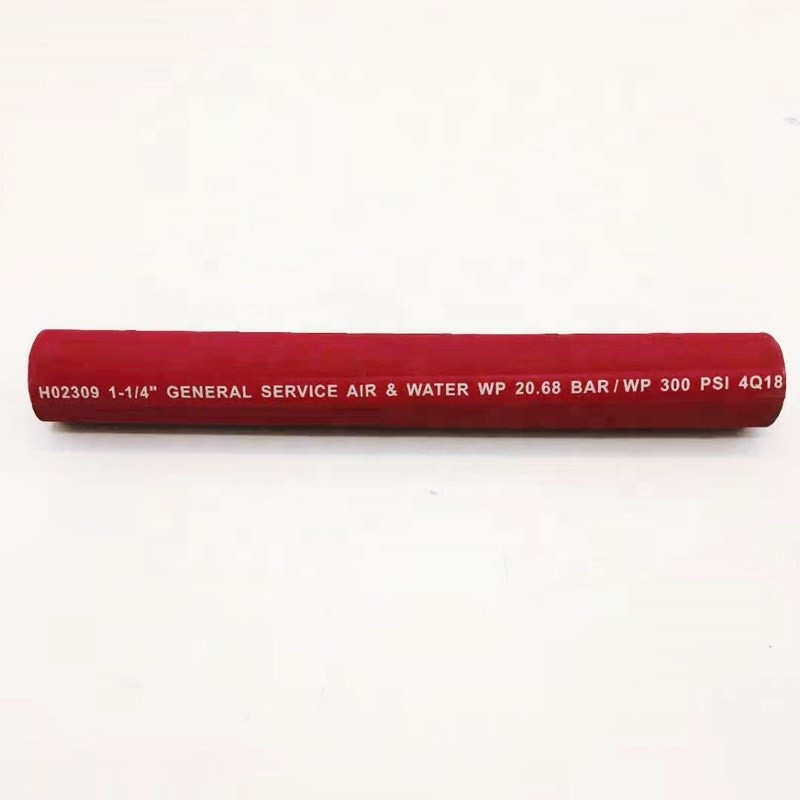335345435
Dec . 07, 2024 09:31 Back to list
sae100r1at manufacturer
Understanding SAE 100R1AT Hydraulic Hoses A Comprehensive Guide for Manufacturers
The hydraulic hose industry is vital for various sectors, including construction, agriculture, and manufacturing. Among the various standards established to ensure the quality and safety of hydraulic hoses is the SAE 100R1AT specification. This article will delve into the significance, features, and manufacturing considerations for SAE 100R1AT hydraulic hoses, ideal for manufacturers looking to understand this critical component of hydraulic systems.
What is SAE 100R1AT?
SAE 100R1AT is a specific standard developed by the Society of Automotive Engineers (SAE) that outlines the requirements for a one-wire braided hydraulic rubber hose. This type of hose is primarily used for high-pressure hydraulic applications, where flexibility and durability are crucial. The acronym SAE stands for the Society of Automotive Engineers, a key organization in establishing performance standards for many automotive and tactical sectors.
Key Features of SAE 100R1AT
1. Construction The SAE 100R1AT hose typically consists of an inner tube made from synthetic rubber that is resistant to hydraulic fluids. The wire reinforcement is usually a single wire braid that provides strength and flexibility. This robust construction allows the hose to perform efficiently under varying pressure conditions, typically rated for pressures up to 3,500 psi.
2. Applications Due to its specifications, the SAE 100R1AT is widely used in multiple industries, including construction machinery, agriculture equipment, and automotive systems. It is ideal for applications that require high-pressure liquid transfer, making it a cornerstone for hydraulic machinery.
3. Temperature Range This hose is designed to operate effectively at temperatures typically ranging from -40°F to +212°F (-40°C to +100°C), making it suitable for diverse environments and operational conditions.
sae100r1at manufacturer

Manufacturing Considerations
For manufacturers, producing SAE 100R1AT hoses comes with several critical considerations
1. Material Quality The choice of materials is paramount. Using high-quality synthetic rubber for the inner tube and ensuring that the wire reinforcement is made from proper steel grade are essential. This quality control guarantees compliance with the performance standards set by SAE.
2. Precision Engineering The manufacturing process of SAE 100R1AT hoses should involve precision engineering techniques to ensure that the hoses meet the exacting standards for durability and pressure resistance. Automated machinery can enhance accuracy in the manufacturing process and help maintain consistency across product batches.
3. Testing and Compliance All produced hoses must undergo rigorous testing to ensure they meet SAE 100R1AT specifications. This includes pressure testing and evaluation under extreme temperature conditions. Regular audits and compliance checks are necessary to ensure quality and reliability.
4. Certification Obtaining proper certification can enhance a manufacturer's credibility in the market. Certification from recognized bodies can help in ensuring that the hoses are not only compliant with SAE standards but also trusted by customers.
Conclusion
Understanding the features and manufacturing practices associated with SAE 100R1AT hydraulic hoses is crucial for any manufacturer involved in the production of hydraulic components. As industries continue to evolve and require more efficient hydraulic solutions, the relevance of high-quality hoses complying with rigorous standards remains paramount. By ensuring that their products meet these specifications, manufacturers can not only serve their clientele effectively but also contribute to improving safety and efficiency in various applications across the globe. Investing in quality manufacturing practices, material selection, and compliance will ensure that their products stand the test of time, thereby fostering business growth in a competitive marketplace.
-
SAE 100 R1AT Hydraulic Hose: Smooth, Wrapped & Colourful
NewsAug.25,2025
-
Premium Distribution PTFE Hose | Flexible & Stainless Braided
NewsAug.23,2025
-
Premium Distribution PTFE Hose: Flexible & Durable Solutions
NewsAug.22,2025
-
SAE 100 R3 / EN854 R3 Hydraulic Hose | Medium Pressure & Flexible
NewsAug.11,2025
-
EN856 4SP Hydraulic Hose: High-Pressure & Durable Solutions
NewsAug.11,2025
-
Premium Soft Rubber Tubing: Flexible & Durable Hose Solutions
NewsAug.10,2025



